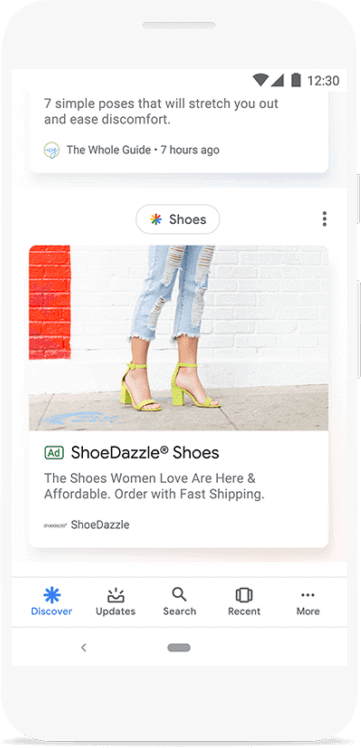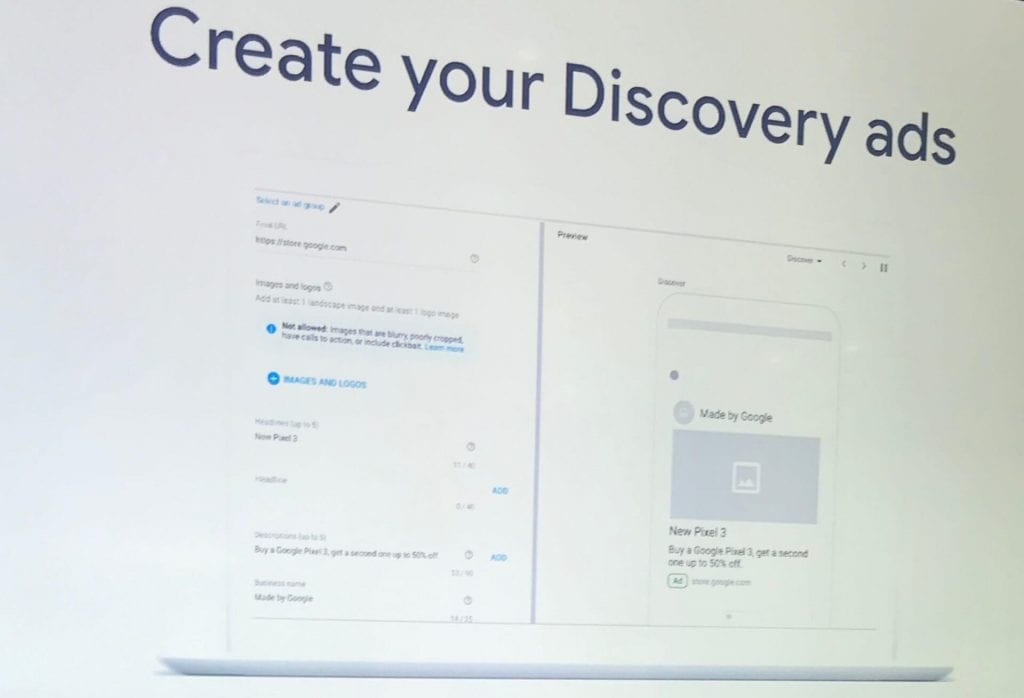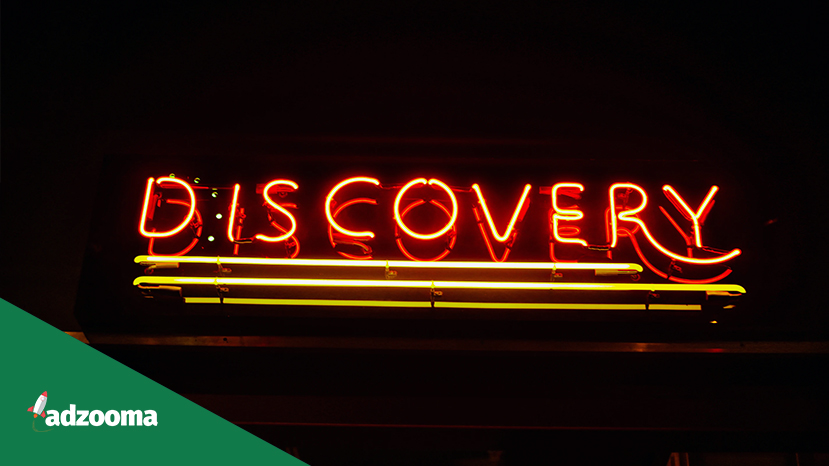The saying goes that content is king. With so much information out there, we wade through an immense amount of irrelevant and low-quality content every day to find what we want. That involves scrolling through news sites and social media (sometimes referred to as doomscrolling) until we see something that attracts our attention or answers our specific query. But Google has taken content consumption one step further.
You may have heard about Google Discovery Ads, one of Google’s most recent products announced last year. It presents an entirely new way for advertisers to target potential customers, by finding consumers that are actively looking to discover new content and areas of interest, rather than intruding on their online experience through invasive advertising.
What are Google Discovery Ads?

Google Discovery Ads are online ads that appear in the Google Discover feed, Google’s news feed app that has been around in various iterations since 2016. It shows users news headlines in a visual, eye-catching form, through which they can infinitely scroll to find the news they want.
Google Discover is a new way of consuming news, as it avoids the need for users to actively search for headlines. It shows users the stories they want before they even realize they want them. The feed, available to iPhone and Android users, allows users to personalize their content stream by selecting specific topics they want to see more or less of. It uses artificial intelligence to continually improve the display, so as a user engages more with their feed, the quality of the content improves. The aim is to make news consumption faster and more efficient, only showing the user what they want, thus reducing the amount of time spent on considering and rejecting irrelevant content.
Google Discovery Ads continues this objective by giving advertisers the opportunity to put relevant content in front of their target audiences. Discovery Ads show up seamlessly in the Discover Feed, generating demand rather than responding to pre-existing demand.
The ads are charged on a cost-per-click (CPC) basis and are not restricted to the Discover Feed. They also show up in Gmail and on YouTube. They are very similar to Google Display Ads in that they are designed to be visual and fit seamlessly into the sites and apps in which they appear.
Discovery Ads can be used by anyone, as long as advertisers adhere to Google’s Ads Policy and personalized advertising guidelines. Much like other forms of Google advertising, audiences can be targeted based on their interests and search queries. It also gives you the option for remarketing to your existing customers and website visitors.
What are the benefits of using Google Discovery Ads?
You’ve seen what Google Discovery Ads look like and what they can do, but what are the specific advantages for advertisers looking to target new and existing audiences? Here are 3:
1. Machine learning
Google’s Discover Feed is powered by machine learning. The more a user interacts with it, the more information it gleans on the user’s preferences, likes and dislikes, and reading habits. Unlike other advertising formats, where the precision and accuracy of targeting criteria alone determine the success of an ad, Google Discover’s machine learning capabilities make your ad even more likely to land in front of the right people. Whatever your targeting criteria, as Google Discover continues to learn about its users, it will be better equipped to filter out those who are irrelevant and only show your ads to those who will really want to see them.
2. Reach
Google Discover is currently used by 800 million people (not counting the additional millions who use Gmail and YouTube). Your ads have the potential to reach millions of people, and no matter how niche your audience, the chances are, you will be able to reach a considerable number of people who match your criteria.
3. Higher CTR
The combination of enhanced targeting and vast reach will inevitably lead to a higher clickthrough rate. The people you are reaching will be in the right frame of mind to be interested in your content. When another ad format such as a Display Ad appears in front of a consumer, it is usually when they are doing something else like making a search query or reading a blog. But when someone is using Google Discover, they are actively looking for things to divert their attention, so as long as your ad is captivating and relevant enough, they will want to click on it.
How to set up Discovery Ads

Setting up your first Google Discovery Ad is straightforward, especially if you have experience using Display Ads and other forms of PPC advertising. Before you begin, you must be clear on your objectives, message and targeting criteria.
Step 1: Set up your campaign
The first step is to set up your campaign in Google Ads, selecting your campaign goals – sales, leads or traffic – and then specifying the exact criteria of who you want to reach.
Step 2: Create your ad
Create a suitable headline, description, graphic and call to action (CTA) for your ad. Make it as compelling as possible and relevant to its audience.
Step 3: Publish your ad
Once your ad is out there, give it time to ramp up and start seeing results. You should measure it as you go and refrain from the urge to keep changing it. Use the results to inform future campaigns.
Do they work?
Google Discovery Ads are a relatively new phenomenon, and as such, there is little data to work with when evaluating their efficacy. But considering the vast user base Google Discover enjoys and the continually evolving AI targeting capabilities, there is potential for advertisers to see massive success.
Digital marketing is seeing a move away from keywords and towards more precise audience targeting, and Google Discovery Ads fit into this perfectly. As long as advertisers are clear on their objectives and their audiences, it looks likely that Google Discovery Ads will play a big part in the future of PPC advertising.




